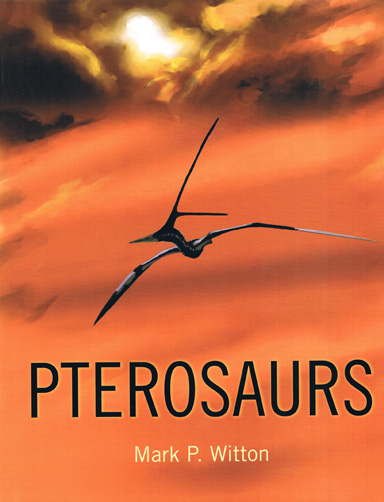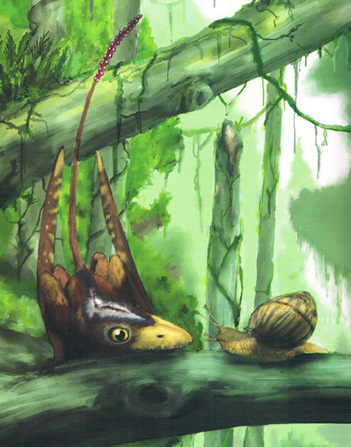Pterosaurs by Mark P. Witton – A New Book Review
Pterosaurs Reviewed
Amongst the myriad of books published on the subject of long extinct creatures, it is the dinosaurs that seem to have had the lion’s share of the limelight, their Mesozoic contemporaries the pterosaurs, have largely been overlooked.
However, this new publication, written by palaeontologist and science writer Mark Witton entitled “Pterosaurs” goes a long way to redressing this imbalance. These “winged lizards”, as that is what the term pterosaurs means once translated from Greek, were the first vertebrates to develop powered flight, nothing like them exists today but thanks to Mark’s skilful writing accompanied by a number of his own original paintings and some exquisite close up shots of these enigmatic animal’s beautifully preserved fossil remains, the reader is rapidly brought up to date with developments in flying reptile research.
Pterosaurs by Mark Witton
The book is essentially split into three distinct parts. The first nine chapters are dedicated to providing a broad understanding of pterosaur evolution, the fossil evidence, their flight abilities and locomotion. If you have ever wondered how an animal as tall as a giraffe could possibly get off the ground, or where the Pterosauria fit into the Sauropsida (reptiles and birds) family tree, then these pages will go a long way to providing you with the answers.
The bulk of the rest of the book is then dedicated to introducing and discussing the numerous pterosaur groups currently recognised by the majority of “Pterosaurologists” and what a bizarre, eclectic collection the pterosaurs prove to be. From the stout jawed, long-tailed Dimorphodontidae, through to the flamboyant Tapejaridae culminating in those giraffe-sized azhdarchids, Mark attempts to introduce each group roughly in chronological order, focusing first on the earliest types of pterosaurs and concluding with the very last of their kind.
Flying Reptiles
Most members of the public can recognise one or two types of flying reptile, thanks largely to their role as flying terrors in films, on television and the ubiquitous use of Pteranodon as a flying reptile model included in most dinosaur toy sets. By the end of chapter twenty-five, the reader has been given a comprehensive run down of the cast of characters that currently make up the Pterosauria Order.
Pterosaurs – Natural History, Evolution, Anatomy by Mark P. Witton
Picture credit: Mark Witton
The picture above shows the front jacket illustration, the pterosaur featured is the “antler crested” Nyctosaurus (chapter 18).
Pterosaur Fossils and Discoveries
Some knowledge of biology, anatomy and scientific terminology would be useful, but to Mark’s credit he works hard to simplify and explain the nuances of these bizarre creatures in a language that enables the lay person to follow the points that are being made without necessarily dumbing down the scientific tone of the book. From our own perspective, with some knowledge of vertebrate palaeontology already, we found some of the details on the latest fossil discoveries, most notably from the Crato Formation (Brazil) and China’s Jiufotang Formation truly enlightening.
In each chapter dedicated to a specific type of pterosaur, Mark provides a skeletal reconstruction and life restoration of a typical member of this part of the pterosaur family tree. This permits the reader to flick backwards and forwards thus comparing the different anatomical features of each type of pterosaur with relative ease. A personal bugbear of ours, a fault found in many a technical tome on palaeontology that attempts to reach out to a wider audience, that of having illustrations supporting points made in the text, placed on subsequent pages and not adjacent to the text that the illustration refers to, is largely avoided.
The excellent drawings and diagrams, including a number of Mark’s own paintings help to explain some of the more complex points made.
How Did They Fly?
One diagram that we found ourselves constantly referring to occurs in chapter six, the part of the book that attempts to answer the most fundamental questions regarding the Pterosauria, why did they fly and were they any good at it?
The author has very helpfully reproduced a graphical representation that compares and contrasts pterosaur wing loadings and aspect ratios with modern fliers (birds and bats). From this single graph, the reader is given the opportunity to view the different morphologies of pterosaurs in terms of their adaptations to certain types of aerial activity. Thus, one can see at a glance those members of the Pterosauria that most likely filled an ecological niche similar to some of today’s sea-birds as marine soarers as well as those flying reptiles more adapted to inland, arboreal habitats where they filled an ecological niche similar to extant aerial predators.
A Curious Sordes pilosus investigates a Late Jurassic land snail
Picture credit: Mark Witton
The book has an extensive reference section, inviting the reader to explore the world of the Pterosaurologist further. A couple of small quibbles on our part, a glossary of terms at the back of the book would have been helpful as would a Pterosauria pronunciation guide but apart from these ever so minor points, Mark is to be congratulated for casting a comprehensive spotlight onto these remarkable reptiles.
The last chapter of “Pterosaurs” deals with the decline and final extinction of these leathery-winged creatures, although a little brief, it does leave the reader with a real sense of loss. These were not the misfits of vertebrate evolution, not simply a stop-gap before the Aves could step into their flying boots and dominate the skies, the book does much to change attitudes towards the Pterosauria. Yes, they were bizarre, but as a group they persisted for something like 150 million years, a lot longer than us hominids and that’s a sobering thought.
Highly recommended.
For models and replicas of pterosaurs and other ancient creatures: Wild Safari Prehistoric World Models.



